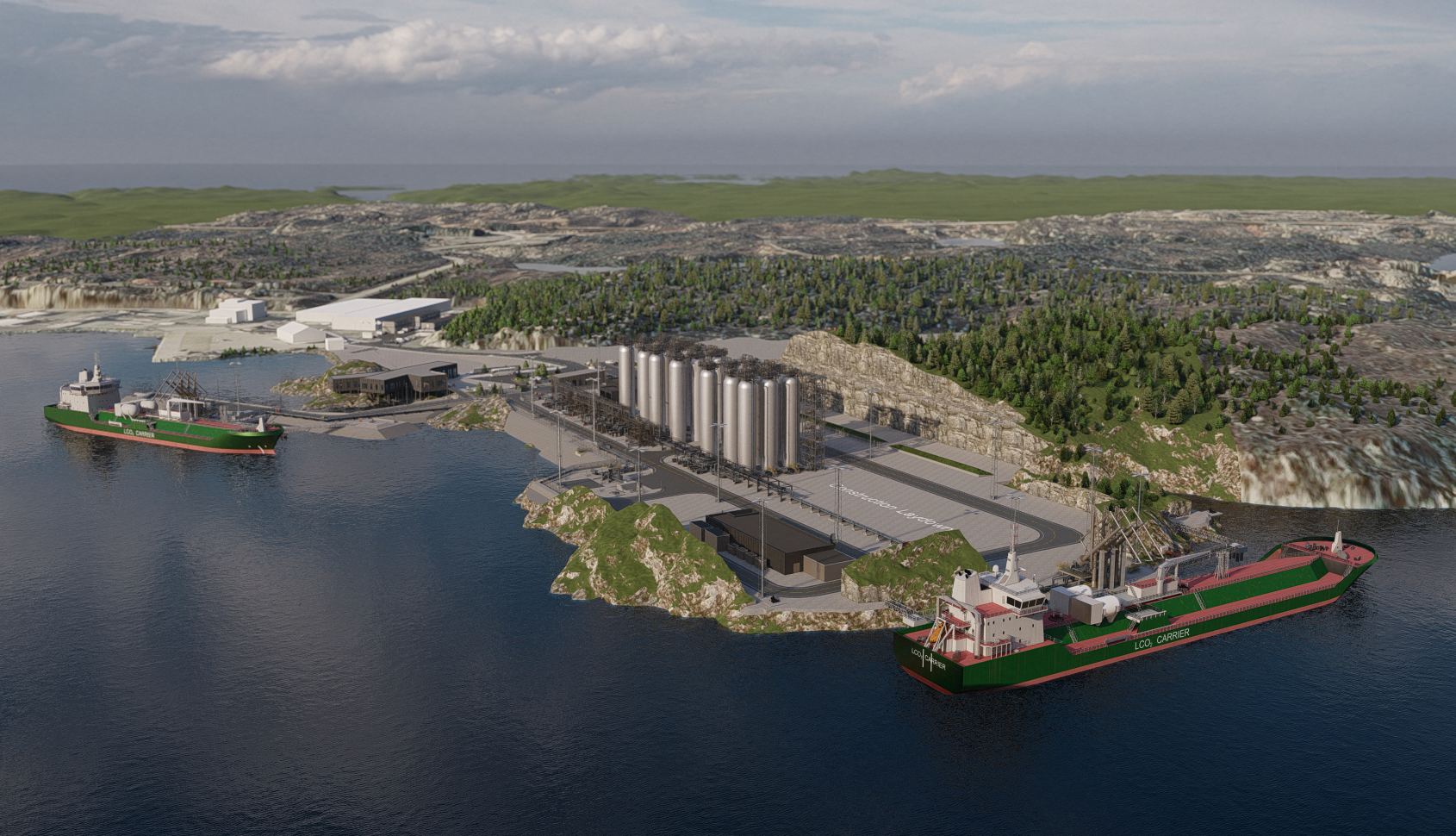Northern Lights awarded EU funding for expansion studies
January 27, 2022

Illustration of what the expanded CO2 receiving terminal in the municipality of Øygarden in western Norway may look like.
The European Commission has announced that EU countries have agreed to award Northern Lights €4 million under the Connecting Europe Facility (CEF) funding scheme. The funding is earmarked for Front-End Engineering Design (FEED) studies for the expansion of the Northern Lights CO2 transport and storage capacity to over 5 million tonnes per year.
Northern Lights will be awarded the funding based on its designation as a Project of Common Interest (PCI) in Europe under the 4th PCI list, a key cross border infrastructure project that supports the EU’s climate policy objectives.
“We are very pleased that the European Union will support studies enabling expansion of the Northern Lights infrastructure to over 5 million tonnes per year. The FEED study will cover expansion of the facilities, including the receiving terminal located in Øygarden in western Norway”, said Cristel Lambton, Technical Director in Northern Lights JV.
The planned expansion will include subsea facilities and capacity increase of the onshore receiving terminal in Øygarden:
- A second jetty to cater for additional volumes of imported CO2 from larger ships
- Additional intermediate storage for CO2 with additional volume
- Additional CO2 export pumps
About Northern Lights
Northern Lights JV DA is developing an open and flexible infrastructure that will transport CO2 by ship from capture sites across Europe to a terminal in western Norway for intermediate storage, before transporting it by pipeline for permanent storage in a reservoir under the seabed. This infrastructure will enable the mitigation of industrial process emissions for which there is currently no scalable solution, accelerate the decarbonisation of European industry, and facilitate the removal of CO2 from the atmosphere.
The construction of the infrastructure and facilities is well under way. Specially designed ships will transport CO2 from emission sources in Norway and Europe. An onshore receiving terminal is now being built in Øygarden municipality and will be connected to pipelines and wells that enable storage 2,600 metres under the seabed.
Phase one of Northern Lights, which is supported by the Norwegian authorities, will be completed by mid-2024, establishing infrastructure to store 1.5 million tonnes of CO2 per year in the Johansen formation south of the Troll field. As demand from industrial sectors in Europe grows, Northern Lights will increase storage capacity.


